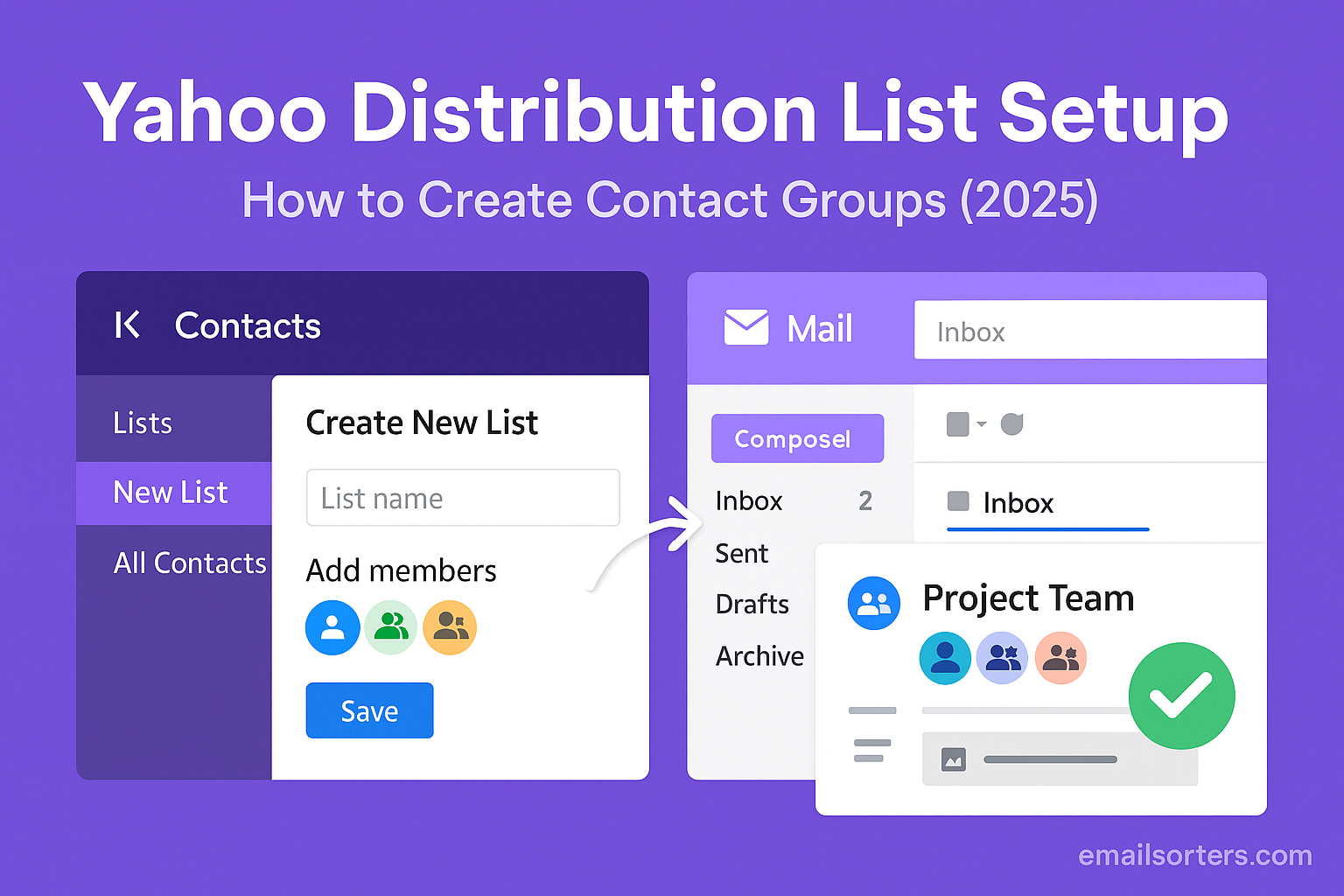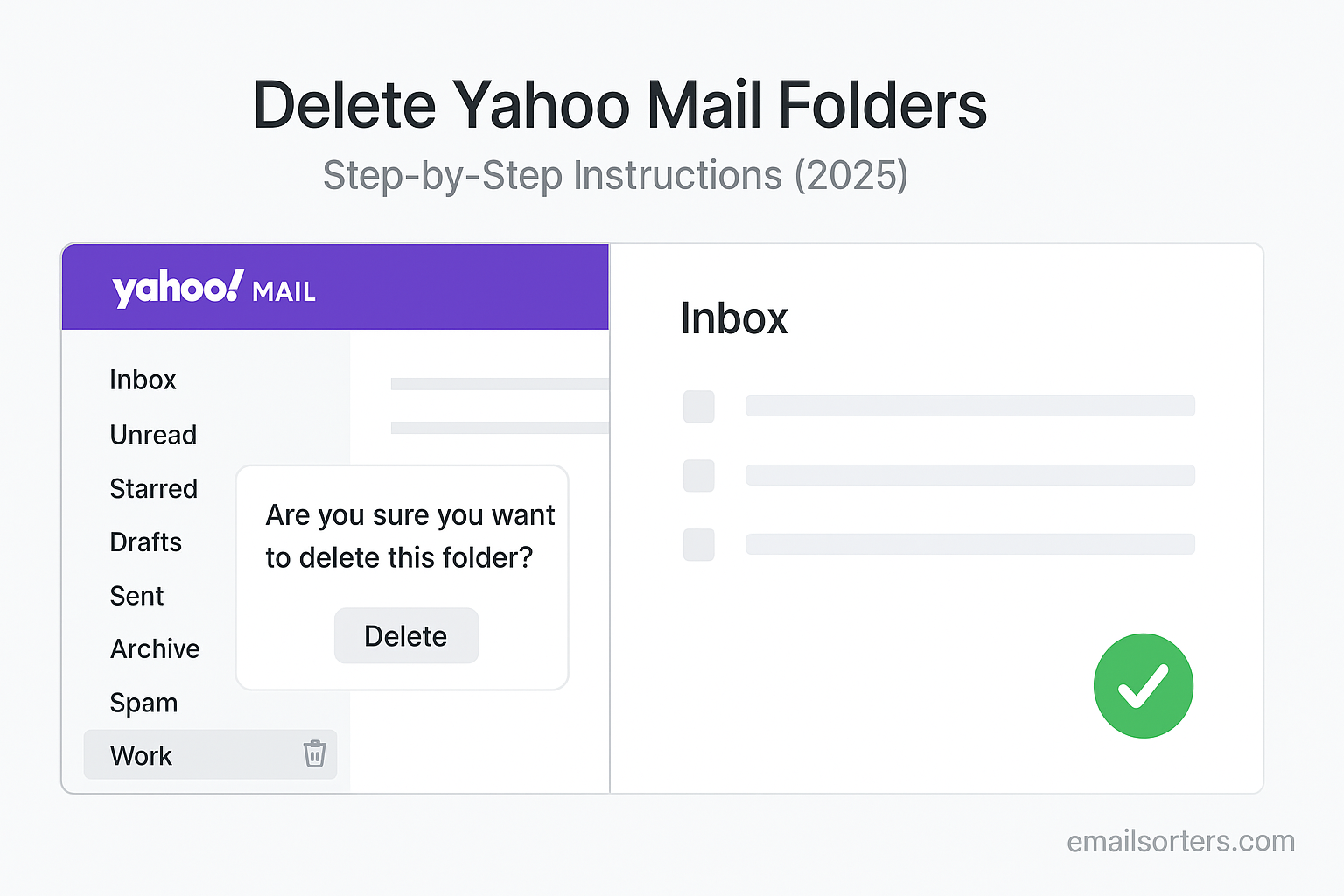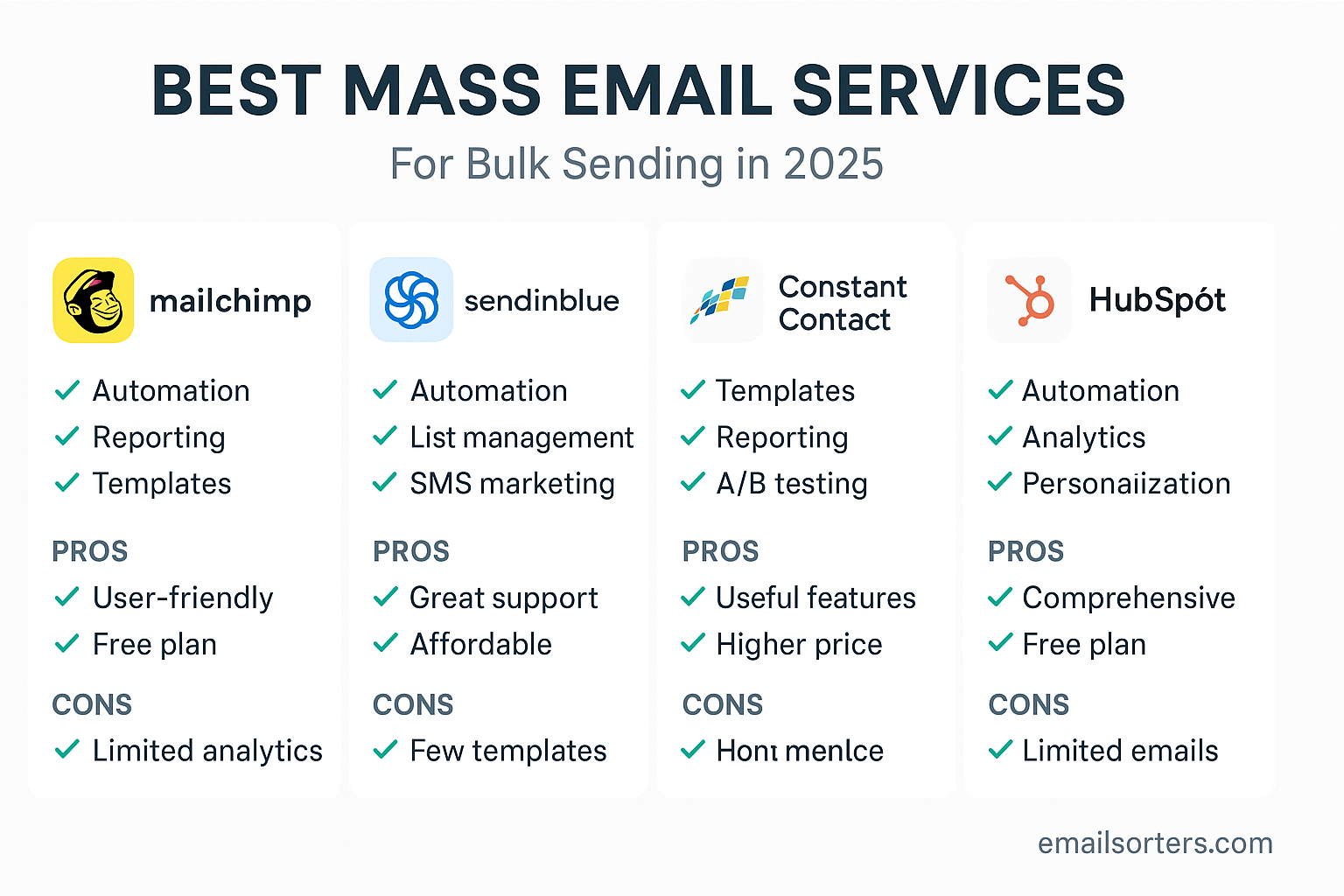To stop junk email in Outlook, you can use a multi-layered strategy. The most important action is to select an unwanted message and mark it as “Junk“ or “Phishing” to train the filter. For persistent senders, you can “Block” their address. You can also adjust the Junk Email protection level and create custom rules to automatically delete unwanted messages.
This 2025 guide provides a complete walkthrough of every tool Outlook offers to help you fight back against spam, promotions, and phishing attempts, allowing you to create a cleaner and safer inbox.
Understanding Junk Email: The Different Kinds of Clutter
A constant stream of junk email is more than just an annoyance; it is a security risk and a major drain on your focus. Before you can effectively fight back, it helps to know what you are dealing with. Not all junk mail is the same.
Category 1: Spam and Phishing
This is the most dangerous type of junk mail. Spam is completely unsolicited, often sent in bulk, and has no value. Phishing is a malicious type of spam designed to trick you. These emails often impersonate a legitimate company, like a bank or a delivery service, in an attempt to steal your password, financial details, or other personal information. This type of mail should always be treated with extreme caution.
Category 2: Graymail (Legitimate but Unwanted)
“Graymail” is the term for legitimate email that you may have signed up for at some point but no longer wish to receive. This includes marketing promotions, company newsletters, and social media notifications. While not malicious, graymail is often the biggest contributor to inbox clutter for the average user.
How Outlook’s Junk Email Filter Works
Outlook uses a powerful and intelligent filtering system that is constantly learning. It analyzes billions of emails across its network to identify the characteristics of spam and phishing threats. When a new email arrives, the filter scans it for these red flags and decides whether it should be delivered to your inbox or sent to the Junk Email folder. Your actions help make this filter even smarter.
The Core Actions: How to Train the Junk Email Filter
Your first and most powerful line of defense is to actively use the tools Outlook provides to report junk mail. This not only cleans your inbox but also trains the filter to get better over time.
The Most Important Tool: The “Report Junk” Button
When you receive an email that is clearly spam or a phishing attempt, do not just delete it.
- Select the message in your inbox.
- On the Home tab of the Outlook ribbon, find the “Junk” button (it may also be under a “Report” button).
- From the dropdown menu, choose “Report Junk” or “Report Phishing.”
This action moves the email to your Junk Email folder and, more importantly, sends a signal to Microsoft’s security team. This helps them improve the global filters for you and all other Outlook users.
The Opposite Action: “Not Junk”
Sometimes, the filter makes a mistake and sends a legitimate email to your Junk Email folder. It is a good practice to scan this folder every few days. If you find a good email, select it and click the “Not Junk” button. This will move the message back to your inbox and teach the filter that this type of email is safe.
Unsubscribing Safely from Graymail
For legitimate but unwanted marketing emails, the best solution is to unsubscribe. Outlook often helps with this by placing an “Unsubscribe” link at the very top of the message preview. Clicking this is a safe and easy way to remove yourself from the mailing list.
The Unsubscribe Dilemma: When to Avoid It
You should be careful with the unsubscribe link. For emails from well-known, reputable brands, it is safe. However, for suspicious, unsolicited spam from a sender you do not recognize, never click the unsubscribe link. Doing so can simply confirm to the spammer that your email address is active, which can lead to even more spam. For these suspicious messages, you should always use the “Report Junk” button instead.
A Deep Dive into Junk E-mail Options (Desktop Client)
The classic Outlook desktop application offers a powerful set of controls that allow you to fine-tune the aggressiveness of the junk mail filter.
Finding Your Junk Mail Settings
On the Home tab of the ribbon, click the “Junk” dropdown menu and select “Junk E-mail Options…” at the bottom. This will open a new window with several tabs.
Understanding the Protection Levels
In the “Options” tab, you can choose your desired level of filtering.
- No Automatic Filtering: This turns the filter off. Mail is only filtered from senders on your personal Blocked Senders list. This is not recommended.
- Low: This is the default setting. It is designed to catch the most obvious and common spam.
- High: This setting is more aggressive and will catch more junk mail. However, it may also occasionally misidentify a legitimate email as junk. If you use this setting, it is very important to check your Junk Email folder regularly.
- Safe Lists Only: This is the most restrictive option. Only email from people or domains on your Safe Senders list will be delivered to your inbox. Everything else goes to the Junk Email folder.
Mastering Safe Senders and Blocked Senders Lists
In the other tabs of the Junk E-mail Options window, you can manage your personal lists.
- Safe Senders: Any email address or domain you add to this list will never be treated as junk, regardless of your protection level. This is perfect for ensuring you always get messages from important clients or family members.
- Blocked Senders: Any email address or domain you add to this list will always be sent directly to the Junk Email folder.
Managing Junk Mail in Outlook on the Web
The browser-based version of Outlook also has a powerful set of tools for managing junk mail.
Finding the Web Settings
Log in to your account at Outlook.com. Click the gear icon in the top-right corner to open the Settings menu, then go to Mail > Junk email.
How to Manage Blocked and Safe Senders
The “Junk email” settings page provides a simple interface for adding and removing addresses from your Blocked Senders and Safe Senders lists. This works just like the desktop version, allowing you to create your own “VIP” list of senders that always get through.
Using Rules for Ultimate Control
For even more power, you can create your own custom rules. Go to Settings > Mail > Rules. Here, you can create a rule that looks for specific keywords or senders and automatically deletes the message, which can be even more effective than just sending it to the Junk folder.
Proactive Defense: How to Stop Junk Before It Starts
The best way to deal with junk mail is to prevent your email address from getting onto spam lists in the first place.
Protect Your Primary Email Address
Think of your main email address as a private piece of information. Avoid posting it on public websites, forums, or social media profiles where automated bots can easily find it and scrape it.
The Power of an Alias
Outlook.com allows you to create free email aliases. An alias is an alternate email address that delivers to your same inbox. You can create an alias specifically for online shopping or newsletter sign-ups. If that alias starts to receive too much spam, you can simply delete it without affecting your primary email address.
Recognizing and Avoiding Phishing
A key part of preventing junk is to not interact with it. Learn the signs of a phishing email: urgent threats, poor grammar, and suspicious links. Never reply to or click on links in an email you do not trust.
The Broader Context of Account Security
Junk mail is not just an annoyance; it is often a sign of broader security issues.
Junk Mail and Account Security
If you suddenly see a massive increase in the amount of spam you are receiving, it could be a sign that your email address was part of a data breach on another website. This is a good time to ensure your account is secure. A guide on how to change your Outlook password provides the steps to create a new, strong password. If you are locked out, our guide on how to reset your Outlook password can help.
How Outlook Compares to Other Providers
The battle against spam is a constant focus for all major email providers. A look at an AOL Mail overview or a Yahoo Mail overview would show that they also have sophisticated filtering systems and user-controlled tools like block lists. The principles of spam management are universal.
A Look at Outlook’s Place in the Market
As a dominant player, especially in the professional world, Outlook is a huge target for spammers. The company invests enormous resources in its security infrastructure to protect its vast user base, a scale that is reflected in the latest Outlook statistics.
A Checklist for a Cleaner Outlook Inbox
Use this checklist to make sure you are using a complete, multi-layered defense strategy against junk mail.
Your Inbox Defense Plan
This list provides a simple framework for taking control of your inbox and dramatically reducing the amount of junk you receive.
- Are you consistently using the “Report Junk” and “Report Phishing” buttons to train the Outlook filter?
- Are you safely unsubscribing from legitimate marketing lists you no longer wish to read?
- Have you added all of your most important contacts and trusted companies to your “Safe Senders” list?
- Have you considered increasing your junk mail filter protection level to “High” for more aggressive filtering?
- Are you protecting your primary email address by being careful where you share it online?
- Have you created an email alias to use for online sign-ups and subscriptions?
Using Third-Party Tools for a Total Reset
If your inbox is already overwhelmed with thousands of old junk emails, a manual cleanup can feel impossible.
When Your Inbox is Overwhelmed
For accounts that have been targeted by spammers for years, the sheer volume of junk can make the inbox almost unusable. In these cases, automated tools can provide a much-needed fresh start.
How Automated Tools Can Help
Third-party inbox management services can securely connect to your Outlook account and provide powerful tools for bulk cleanup. Services from companies like Clean Email, for example, can analyze your entire inbox, group all your junk mail and subscriptions together, and allow you to unsubscribe from and delete thousands of unwanted messages with just a few clicks.
Frequently Asked Questions (FAQ): Stop Junk Email in Outlook
Here are detailed answers to some of the most common questions users have about managing junk email in Outlook.
1. I blocked a sender, but I still get emails from them. Why?
This is a common and frustrating issue caused by “email spoofing.” Spammers rarely use a single, consistent email address. They use software that forges or randomly generates a new “From” address for every message they send. When you block spammer123@example.com, it does not stop the next email that comes from spammer456@example.com. In this situation, blocking is not effective. A better strategy is to create a Rule that looks for a consistent word or phrase in the subject line or body of their emails and automatically deletes them.
2. What is the difference between “Junk” and “Block”?
These are two different but related actions. Marking a message as Junk moves that specific email to the Junk Email folder and, more importantly, it helps train Microsoft’s global filtering system to get smarter. Blocking a sender creates a personal rule in your account that says all future mail from that specific email address should always be sent directly to the Junk Email folder. You should use “Junk” for all unwanted mail to help the filter learn. You should use “Block” for a specific, persistent sender who is bothering you.
3. I’m afraid to set my filter to “High” because I might miss important emails. How can I prevent this?
This is a valid concern. The best way to prevent this is to proactively use your “Safe Senders” list. Before you change your filter level to “High,” take a few minutes to add the email addresses and domains of all your important contacts, clients, and trusted companies to this list. The Safe Senders list acts as a “VIP pass” that bypasses the junk filter completely. This ensures that emails from these senders will always arrive in your inbox, even if your filter is set to be very aggressive.
4. Does the Junk Email filter work on the Outlook mobile app?
Yes, absolutely. The Junk Email filter is a server-side feature. This means the analysis and sorting of incoming mail happen on Microsoft’s servers before the email is ever delivered to your devices. The protection level you set on your desktop or on the web app applies to your entire account. Therefore, your mobile app is protected by the same powerful filter, and you will see the same messages in your Junk Email folder whether you are on your phone or your computer.
5. Why do I have to review my Junk Email folder at all? Can’t I just ignore it?
While Outlook’s filter is very accurate, no automatic system is perfect. It can occasionally make a mistake and send a legitimate email—known as a “false positive”—to the Junk Email folder. It is a best practice to quickly scan the subject lines in your Junk Email folder every few days. This takes only a few seconds and ensures that an important message, like a job offer, a shipping confirmation, or a message from a new contact, did not end up there by mistake.




